- Home
- Peter Straub
The Throat
The Throat Read online
Praise for
THE THROAT
and
PETER STRAUB’S
BLUE ROSE TRILOGY
“Magnificent.… Intensely riveting.… A haunting tale of murder, obsession, and the malevolent horror that can inhabit those dark forbidding places in us all.”
—Milwaukee Journal Sentinel
“Terrifying psychological horror.… Straub, a master storyteller, weaves a tale that’s rich in detail and character.”
—The Plain Dealer
“An intense thriller.… Fans of Straub’s Koko will be pleased to know that Tim Underhill is back.”
—USA Today
“An excellent psychological novel.… We may want to turn away … but we cannot because the horror mesmerizes us.”
—Pittsburgh Post-Gazette
“Suspenseful and compelling.… Mesmerizing.… Just when the reader thinks he has the cases figured out, Straub manipulates the plot to expose yet more twists.”
—Chattanooga Times Free Press
“Marvelous.… Enormously satisfying.… Unashamedly designed to fascinate.”
—The Sacramento Bee
“The best of Peter Straub’s writing.”
—Houston Chronicle
“The characters are outstanding.… They are the story, enshrouded by a nightmare that never lifts. Peter Straub takes bold risks and he succeeds.”
—San Jose Mercury News
“Enormously entertaining and scary.… Rich, complex, dark, and tough to put down.”
—New York Daily News
Books by
PETER STRAUB
FICTION
Marriages
Julia
If You Could See Me Now
Ghost Story
Shadowland
The General’s Wife
Floating Dragon
The Talisman (with Stephen King)
Wild Animals
Under Venus
Koko
Mystery
Houses Without Doors
A Short Guide to the City
Mrs. God
The Throat
The Hellfire Club
Mr. X
Magic Terror
Black House (with Stephen King)
Lost Boy Lost Girl
In the Night Room
5 Stories
Poe’s Children (editor)
A Dark Matter
American Fantastic Tales (editor)
NONFICTION
Sides
POETRY
My Life in Pictures
Ishmael
Open Air
Leeson Park and Belsize Square: Poems 1970–1975
PETER STRAUB
THE THROAT
Peter Straub is the New York Times bestselling author of more than a dozen novels, most recently A Dark Matter. He has won the Bram Stoker Award for his novels Lost Boy Lost Girl and In the Night Room, as well as for his recent collection, 5 Stories. Straub was the editor of the two-volume Library of America anthology American Fantastic Tales. He lives in New York City.
www.peterstraub.net
FIRST ANCHOR BOOKS EDITION, AUGUST 2010
Copyright © 1993 by Seafront Corporation
All rights reserved. Published in the United States by Vintage Books, a division of Random House, Inc., New York, and in Canada by Random House of Canada Limited, Toronto. Originally published in the United States in hardcover by Dutton, a division of Penguin Group (USA) Inc., New York, in 1993.
Anchor Books and colophon are registered trademarks of Random House, Inc.
This is a work of fiction. Names, characters, places, and incidents either are the product of the author’s imagination or are used fictitiously. Any resemblance to actual persons, living or dead, events, or locales is entirely coincidental.
Library of Congress Cataloging-in-Publication Data
Straub, Peter, 1943–
The throat / Peter Straub. —1st Anchor Books ed.
p. cm.
eISBN: 978-0-307-77666-2
1. Vietnam War, 1961–1975—Veterans—Fiction. 2. Illinois—Fiction.
3. Psychological fiction. I. Title.
PS3569.T6914T46 2010
813′.54—dc22
2010006677
www.anchorbooks.com
v3.1
For
Ann Lauterbach and
Susan Straub
A being can only be touched where it yields. For a woman, this is under her dress; and for a god it’s on the throat of the animal being sacrificed.
—GEORGE BATAILLE, Guilty
I see again my schoolroom in Vyra, the blue roses of the wallpaper, the open window.… Everything is as it should be, nothing will ever change, nobody will ever die.
—VLADIMIR NABOKOV, Speak, Memory
CONTENTS
Cover
Other Books by This Author
About the Author
Title Page
Copyright
Dedication
Epigraph
ACKNOWLEDGMENTS
PART ONE: TIM UNDERHILL
PART TWO: FRANKLIN BACHELOR
PART THREE: JOHN RANSOM
PART FOUR: WALTER DRAGONETTE
PART FIVE: ALAN BROOKNER
PART SIX: RALPH AND MARJORIE RANSOM
PART SEVEN: TOM PASMORE
PART EIGHT: COLONEL BEAUFORT RUNNEL
PART NINE: IN THE REALM OF THE GODS
PART TEN: WILLIAM WRITZMANN
PART ELEVEN: JANE WRIGHT AND JUDY ROLLIN
PART TWELVE: EDWARD HUBBEL
PART THIRTEEN: PAUL FONTAINE
PART FOURTEEN: ROSS MCCANDLESS
PART FIFTEEN: LENNY VALENTINE
PART SIXTEEN: FROM DANGEROUS DEPTHS
PART SEVENTEEN: JOHN RANSOM
PART EIGHTEEN: THE KINGDOM OF HEAVEN
ACKNOWLEDGMENTS
I owe thanks to all who helped by contributing their insight, intelligence, advice, stories, and support: Charles Bernstein; Tom Noli; Hap Beasley; Scott Hamilton; Warren Vaché; Lila Kalinich; Joe Haldeman; Eda Rak; my brother, John Straub; and my wondrous editor, Laurie Bernstein.
PART
ONE
TIM UNDERHILL
1
AN ALCOHOLIC HOMICIDE DETECTIVE in my hometown of Millhaven, Illinois, William Damrosch, died to ensure, you might say, that this book would never be written. But you write what comes back to you, and then afterward it comes back to you all over again.
I once wrote a novel called The Divided Man about the Blue Rose murders, and in that book I called Damrosch Hal Esterhaz. I never alluded to my own connections to the Blue Rose murders, but those connections were why I wrote the book. (There was one other reason, too.) I wanted to explain things to myself—to see if I could slice through to the truth with that old, old weapon, the battered old sword, of story telling.
I wrote The Divided Man after I was processed out of the army and had settled into a little room near Bang Luk, the central flower market in Bangkok. In Vietnam I had killed several people at long distance and one close up, so close that his face was right before me. In Bangkok, that face kept coming back to me while I was writing. And with it came, attached like an enormous barnacle to a tiny boat, the other Vietnam, the Vietnam before Vietnam, of childhood. When my childhood began coming back to me, I went off the rails for a bit. I became what you could charitably call “colorful.” After a year or so of disgrace, I remembered that I was thirty-odd years old, no longer a child, that I had a calling of a kind, and I began to heal. Either childhood is a lot more painful the second time around, or it’s just less bearable. None of us are as strong or as brave as the children we used to be.
About a year after I straightened out, I came back to America and wound up w
riting a couple of books with a novelist named Peter Straub. These were called Koko and Mystery, and maybe you read them. It’s okay if you didn’t. Peter’s a nice enough kind of guy, and he lives in a big gray Victorian house in Connecticut, just off Long Island Sound. He has a wife and two kids, and he doesn’t get out much. Peter’s office on the third floor of his house was the size of my whole loft on Grand Street, and his air conditioning and his sound system always worked.
Peter liked listening to my descriptions of Millhaven. He was fascinated with the place. He understood exactly how I felt about it. “In Millhaven, snow falls in the middle of summer,” I’d say, “sometimes in Millhaven, flights of angels blot out the whole sky,” and he’d beam at me for about a minute and a half. Here are some other things I told him about Millhaven: once, on the near south side of town, a band of children killed a stranger, dismembered him, and buried the pieces of his body beneath a juniper tree, and later the divided and buried parts of the body began to call out to each other; once a rich old man raped his daughter and kept her imprisoned in a room where she raved and drank, raved and drank, without ever remembering what had happened to her; once the pieces of the murdered man buried beneath the juniper tree called out and caused the children to bring them together; once a dead man was wrongly accused of terrible crimes. And once, when the parts of the dismembered man were brought together at the foot of the tree, the whole man rose and spoke, alive again, restored.
For we were writing about a mistake committed by the Millhaven police and endorsed by everyone else in town. The more I learned, the worse it got: along with everyone else, I had assumed that William Damrosch had finally killed himself to stop himself from murdering people, or had committed suicide out of guilt and terror over the murders he had already done. Damrosch had left a note with the words BLUE ROSE on the desk in front of him.
But this was an error of interpretation—of imagination. What most of us call intelligence is really imagination—sympathetic imagination. The Millhaven police were wrong, and I was wrong. For obvious reasons, the police wanted to put the case to rest; I wanted to put it to rest for reasons of my own.
I’ve been living in New York for six years now. Every couple of months I take the New Haven Line from Grand Central, get off at the Greens Farms stop, and stay up late at night drinking and talking with Peter. He drinks twenty-five-year-old malt whiskey, because he’s that kind of guy, and I drink club soda. His wife and his kids are asleep and the house is quiet. I can see stars through his office skylight, and I’m aware of the black bowl of night over our heads, the huge darkness that covers half the planet. Now and then a car swishes down the street, going to Burying Hill Beach and Southport.
Koko described certain things that happened to members of my old platoon in and after the war, and Mystery was about the long-delayed aftermath of an old murder in a Wisconsin resort. Because we liked the idea, we set the novel on a Caribbean island, but the main character, Tom Pasmore—who will turn up later in these pages—was someone I knew back in Millhaven. He was intimately connected with the Blue Rose murders blamed on William Damrosch, and a big part of Mystery is his discovery of this connection.
After Mystery I thought I was done with Damrosch, with Millhaven, and with the Blue Rose murders. Then I got a call from John Ransom, another old Millhaven acquaintance, and because much in his life had changed, my life changed too. John Ransom still lived in Millhaven. His wife had been attacked and beaten into a coma, and her attacker had scrawled the words BLUE ROSE on the wall above her body.
2
INEVER KNEW JOHN RANSOM very well. He lived in a big house on the east side and he went to Brooks-Lowood School. I lived in Pigtown, on the fringes of the Valley, south of downtown Millhaven and a block from the St. Alwyn Hotel, and I went to Holy Sepulchre. Yet I knew him slightly because we were both tackles, and our football teams played each other twice a year. Neither team was very good. Holy Sepulchre was not a very big school, and Brooks-Lowood was tiny. We had about one hundred students in each grade. Brooks-Lowood had about thirty.
John Ransom said, “Hi,” the first time we faced each other in a game. These preppies are a bunch of cupcakes, I thought. When play started, he hit me like a bulldozer and pushed me back at least a foot. The Brooks-Lowood quarterback, a flashy bit of blond arrogance named Teddy Heppenstall, danced right past me. When we lined up for the next play, I said, “Well, hi to you, too,” and we butted shoulders and forearms, utterly motionless, while Teddy Heppenstall romped down the other side of the field. I was sore for a whole week after the game.
Every November, Holy Sepulchre sponsored a Christian Athletes’ Fellowship Dinner, which we called “the football supper.” It was a fundraiser held in the church basement. The administration invited athletes from high schools all over Millhaven to spend ten dollars on hamburgers, potato chips, baked beans, macaroni salad, Hawaiian Punch, and a speech about Christ the Quarterback from Mr. Schoonhaven, our football coach. Mr. Schoonhaven believed in what used to be called muscular Christianity. He knew that if Jesus had ever been handed a football, He would have demolished anyone who dared get between Him and the endzone. This Jesus bore very little resemblance to Teddy Heppenstall, and none at all to the soulful, rather stricken person who cupped His hands beneath His own incandescent heart in the garish portrait that hung just inside the church’s heavy front doors.
Few athletes from other schools ever attended the football suppers, although we were always joined by a handful of big crew-cut Polish boys from St. Ignatius. The St. Ignatius boys ate hunched over their plates as if they knew they had to hold in check until next football season their collective need to beat up on someone. They liked to communicate threat, and they seemed perfectly attuned to Mr. Schoonhaven’s pugnacious Jesus.
At the close of the season in which John Ransom had greeted me and then flicked me out of Teddy Heppenstall’s way, a tall, solidly built boy came into the church basement near the end of the first, informal part of the football supper. In a couple of seconds we would have to snap into our seats and look reverential. The new boy was wearing a tweed sports jacket, khaki pants, a white button-down shirt, and a striped necktie. He collected a hamburger, shook his head at the beans and macaroni salad, took a paper cup of punch, and slid into the seat beside mine before I could recognize him.
Mr. Schoonhaven stood up to the microphone and coughed into his fist. A report like a gunshot resounded through the basement. Even the St. Ignatius delinquents sat up straight. “What is a Gospel?” Mr. Schoonhaven bellowed, beginning as usual without preamble. “A Gospel is something that may be believed.” He glared at us and yelled, “And what is football? It too is something that can be believed.”
“Spoken like a true coach,” the stranger whispered to me, and at last I recognized John Ransom.
Father Vitale, our trigonometry teacher, frowned down the table. He was merely distributing the frown he wished to bestow on Mr. Schoonhaven, who was a Protestant and could not keep from sounding like one on these occasions. “What are the Gospels about? Salvation. Football is about salvation, too,” said the coach. “Jesus never dropped the ball. He won the big game. Each of us, in our own way, is asked to do the same. What do we do when we’re facing the goalposts?”
I took my pen out of my shirt pocket and wrote on a creased napkin, What are you doing here? Ransom read my question, turned over the paper, and wrote, I thought it would be interesting. I raised my eyebrows.
Yes, it’s interesting, John Ransom wrote on the napkin.
I felt a flash of anger at the thought that he was slumming. To all the rest of us, even the St. Ignatius hoodlums, the cinder-block church basement was as familiar as the cafeteria. In fact, our cafeteria was almost identical to the church basement. I had heard that waiters and waitresses served the Brooks-Lowood students at tables set with linen tablecloths and silverware. Actual waiters. Actual silverware, made of silver. Then something else occurred to me. I wrote, Are you Catholic? and nudged John Ra
nsom’s elbow. He looked down, smiled, and shook his head.
Of course. He was a Protestant.
Well? I wrote.
I’m waiting to find out, he wrote.
I stared at him, but he returned to Mr. Schoonhaven, who was telling the multitude that the Christian athlete had a duty to go out there and kill for Jesus. Stomp! Batter! Because that was what He wanted you to do. Take no prisoners!
John Ransom leaned toward me and whispered, “I like this guy.”
Again I felt a chill of indignation. John Ransom imagined that he was better than us.
Of course, I thought that I was better than Mr. Schoonhaven, too. I thought I was better than the church basement, not to mention Holy Sepulchre and, by extension, the eight intersecting streets that constituted our neighborhood. Most of my classmates would end up working in the tanneries, can factories, breweries, and tire recapping outfits that formed the boundary between ourselves and downtown Millhaven. I knew that if I could get a scholarship I was going to college; I planned to get out of our neighborhood as soon as possible. I liked the place I came from, but a lot of what I liked about it was that I had come from there.
That John Ransom had trespassed into my neighborhood and overheard Mr. Schoonhaven’s platitudes irritated me, and I was about to snarl something at him when I noticed Father Vitale. He was getting ready to push himself off his chair and smack me on the back of my head. Father Vitale knew that man was sinful from the mother’s womb and that “Nature, which the first human being harmed, is miserable,” as St. Augustine says. I faced forward and clasped my hands in front of my plate. John Ransom had also noticed the surly old priest gathering himself to strike, and he too clasped his hands on the table. Father Vitale settled back down.
There must have been some envy in my irritation. John Ransom was a fairly good-looking boy, as good looks were defined in the days when John Wayne was considered handsome, and he wore expensive clothes with unself-conscious ease. One look at John Ransom told me that he owned closets full of good jackets and expensive suits, that his drawers were stuffed with oxford-cloth shirts, that he owned his own tie rack.

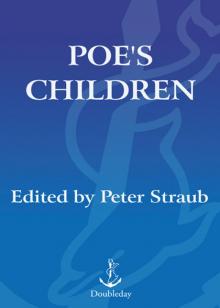 Poe's Children: The New Horror: An Anthology
Poe's Children: The New Horror: An Anthology Koko
Koko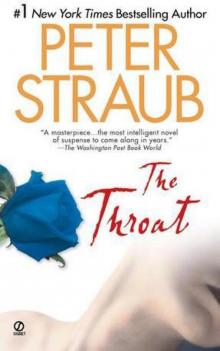 The Throat
The Throat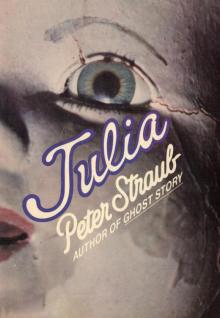 Julia
Julia Interior Darkness: Selected Stories
Interior Darkness: Selected Stories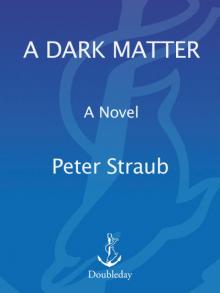 A Dark Matter
A Dark Matter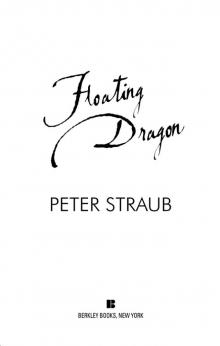 Floating Dragon
Floating Dragon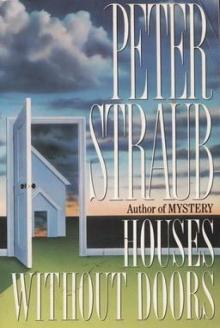 Houses Without Doors
Houses Without Doors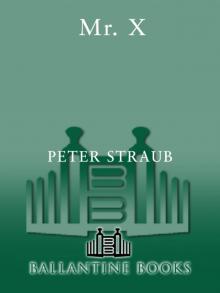 Mr. X
Mr. X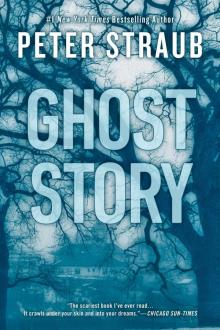 Ghost Story
Ghost Story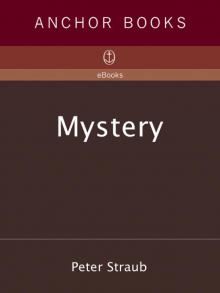 Mystery
Mystery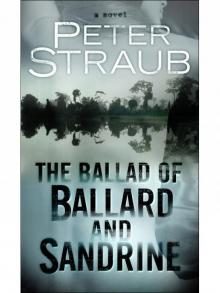 The Ballad of Ballard and Sandrine
The Ballad of Ballard and Sandrine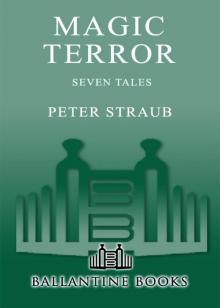 Magic Terror
Magic Terror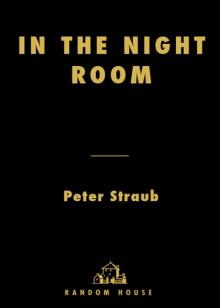 In the Night Room
In the Night Room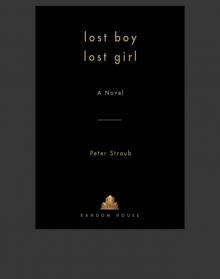 Lost Boy Lost Girl
Lost Boy Lost Girl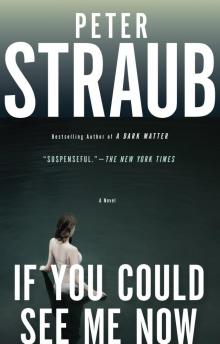 If You Could See Me Now
If You Could See Me Now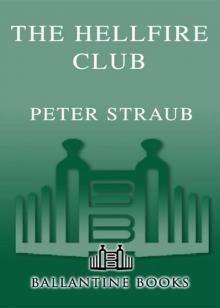 The Hellfire Club
The Hellfire Club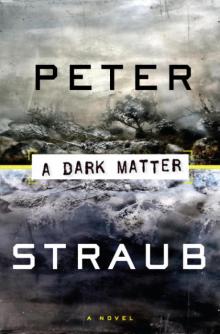 A Dark Matter: A Novel
A Dark Matter: A Novel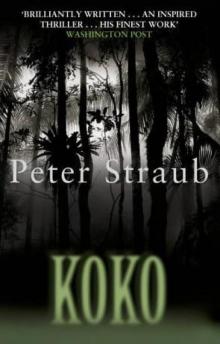 Koko brt-1
Koko brt-1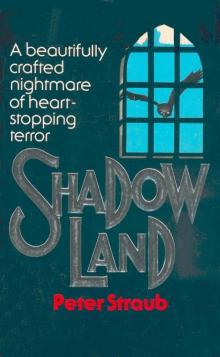 Shadowland
Shadowland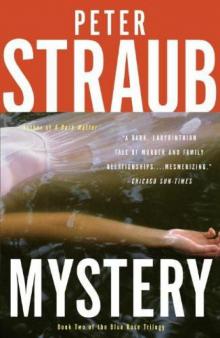 Mystery brt-2
Mystery brt-2 Interior Darkness
Interior Darkness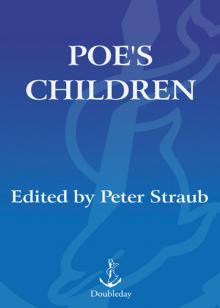 Poe's Children
Poe's Children